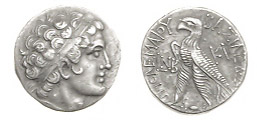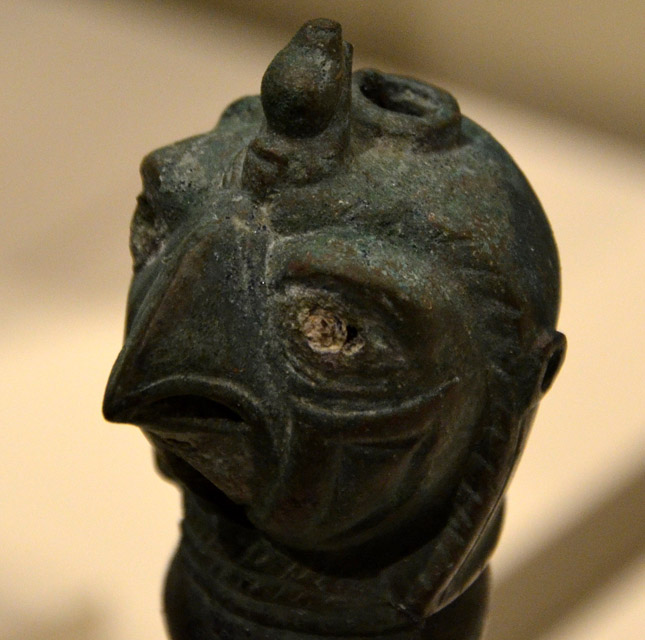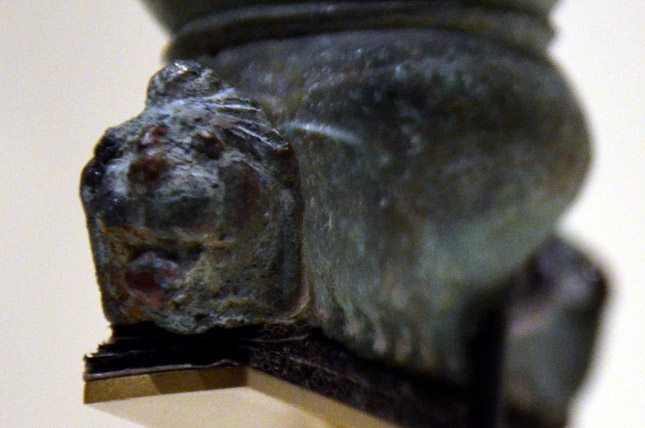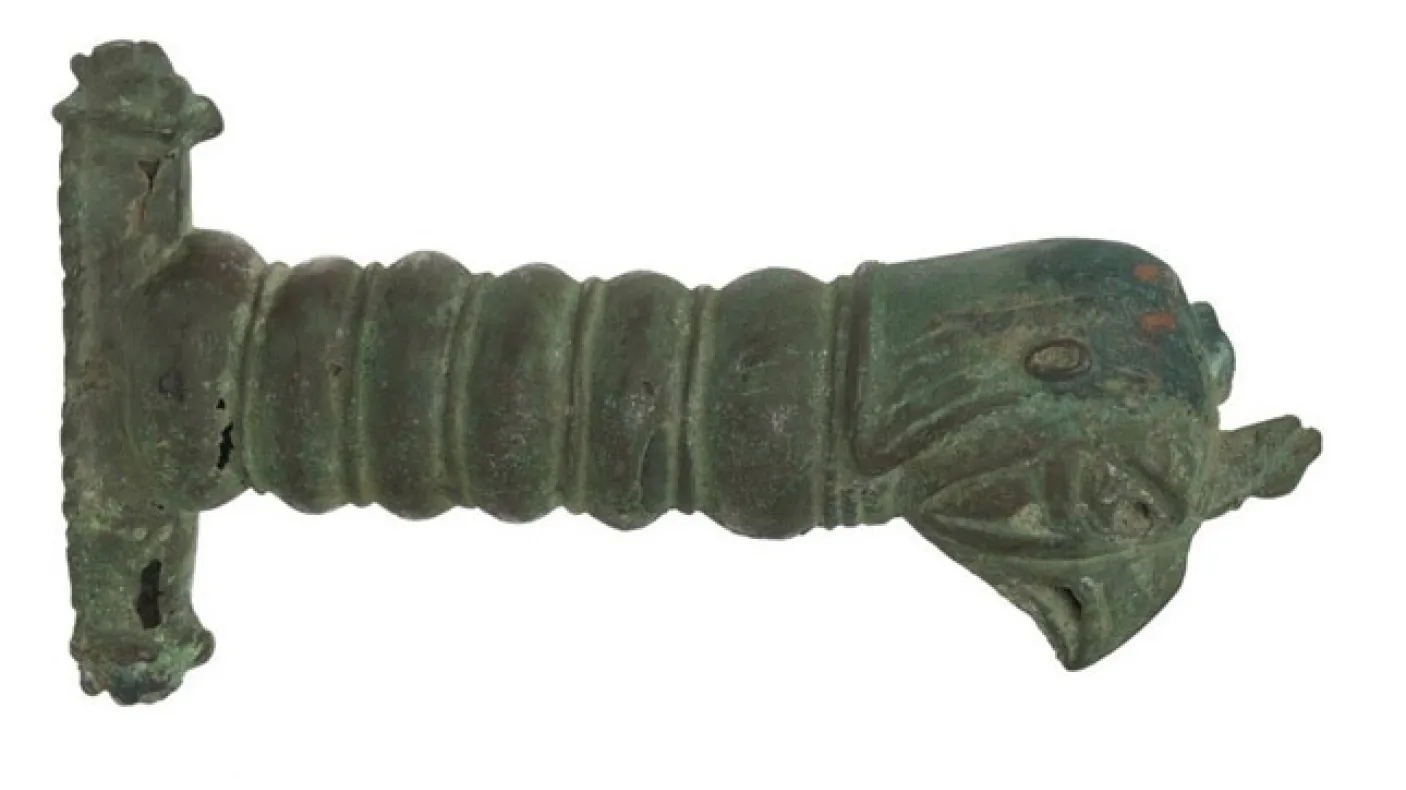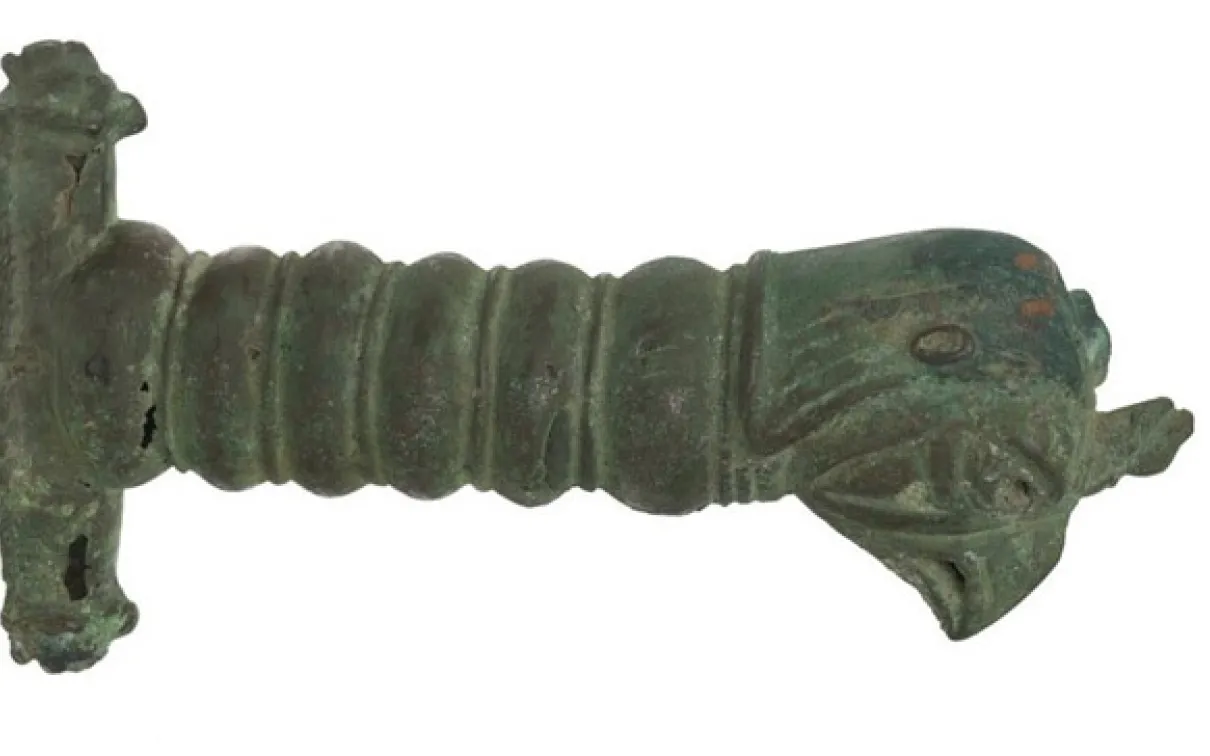Weapon Wednesday: a Romano-Egyptian sword hilt
Published
Categories
Author
Blog Post
This object (910.175.328) is actually a part of a weapon, but a very important one, acquired before 1910 in Cairo by Charles Currelly and presently in the Eaton Gallery of Rome. It is the cast bronze hilt of a sword. It depicts a bird's head, which is actually the Horus falcon, as it has the crown of Upper and Lower Egypt on its head. Such influences from Ancient Egypt were common in Ptolomaic and Roman Egypt. The best known parallel we have to this sword grip are the hilts of swords depicted as being carried by the Emperor Diocletian and the Tetrarchy, dated to about 300 AD; but these and other known Roman swords are clearly eagles. The eagle was the primary symbol of the Roman army from the time of the reforms of Marius in 104 BC, but Horus is far more ancient, being an important god in Predynastic Egypt (before 3,200 BC). As the religion and pantheon of Ancient Egypt grew and synthesised with political unification, Horus remained important. Under the influence of the monotheistic Achaemenid Persians, who ruled Egypt between 525-402 BC and again in 343-332 BC, Egyptian religion seemed to become more centered around the Osiris-Isis-Horus trinity. This developed further under the Ptolomies (332-30 BC), with Osiris becoming known as Serapis and the child Horus known as Harpocrates. The Ptolomies typically had an image of Zeus in the form of an eagle standing on thunder-bolts on their coinage (see below), which may explain the continuity of the imagery of Horus as falcon. Under the Romans this trinity of the father Osiris/Serapis, the mother Isis, and their son the forgiving Horus/Harpocrates, became so popular that Augustus tried to restrict its growth. However, later Romans embraced these Egyptian deities, and under Domitian, emperor from 81 to 96 AD, temples were built to Isis and Serapis in Rome. In this time the symbolism of Horus as the embodiment of the pharoah, or the Emperor, the king that has come to judge, became very important. While Isis, Serapis and Harpocrates became Romanised in their appearance (see this beautiful vase in the ROM collection - note the little crown on Harpocrates' head), Horus in his personification of rule retained his traditional falcon-headed appearance. Statues of Horus in Roman armour exactly as deified emperors were depicted became popular (the British Museum has two, one standing, the other sitting , the latter one being the subject of an interesting study of its pigments - note the crown is missing but otherwise closely resembles the ROM's pommel). The symbolism of Horus as the vanquisher of Evil carried on perhaps into the Christian period, judging by a 4th century AD depiction in the Louvre that looks just like St. George and the Dragon.
So it is probably in this context that our sword grip was made. This association with the ruler might suggest that this was actually an Emperor's sword, although it could possibly have been worn by a statue of one!
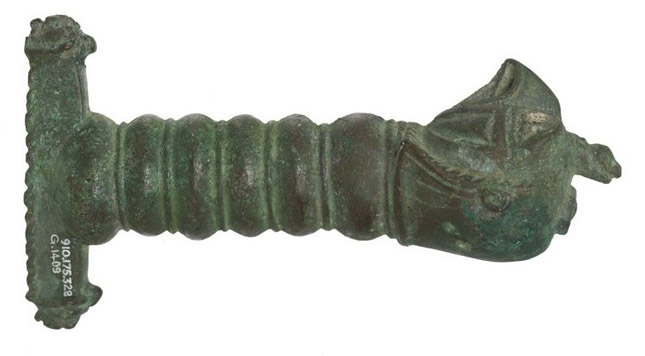
Romano-Egyptian sword hilt number 910.175.328 (ROM Photography)
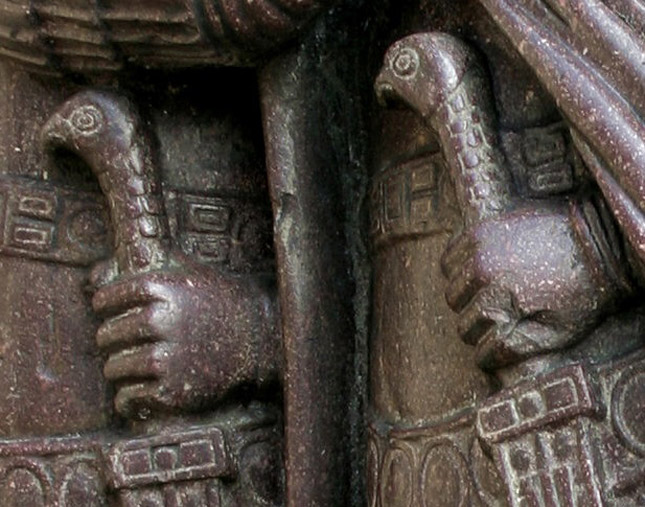
Detail of Diocletian's eagle-headed sword grip, from Diocletian and the Tetrarchy, circa 300 (Wikipedia Commons)
